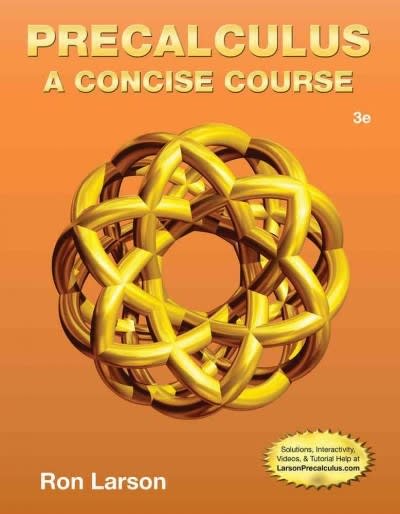Question
(3 points) Nonexercise activity thermogenesis (NEAT) provides a partial explanation for the results you found in the previous analysis. NEAT is energy burned by fidgeting,
- (3 points) Nonexercise activity thermogenesis (NEAT) provides a partial explanation for the results you found in the previous analysis. NEAT is energy burned by fidgeting, maintenance of posture, spontaneous muscle contraction, and other activities of daily living. In the study of the previous exercise, the 160 subjects increased their NEAT by 328 calories per day, on average, in response to the additional food intake. The standard deviation was 256.
Test the null hypothesis that there was no change in NEAT (NEAT = 0 calories per day) using a two-sided alternative.
(1) state the null
H0 =
(2) the alternative hypothesis,
Ha =
(3) calculate the test statistic and
Z Score =
(4) the P-value,
P-Value, using table A
(5) then interpret what you find. What do you conclude? Since the sample size is large enough, you can use a z-score and get p-values from table A in the book (the table for standard normal cumulative proportions). Use an alpha significance level of 0.05 to decide whether or not to reject the null hypothesis. Tip: Remember that you can sketch the normal curve and shade the part(s) that you are looking for to help keep things straight in your mind.
Step by Step Solution
There are 3 Steps involved in it
Step: 1

Get Instant Access to Expert-Tailored Solutions
See step-by-step solutions with expert insights and AI powered tools for academic success
Step: 2

Step: 3

Ace Your Homework with AI
Get the answers you need in no time with our AI-driven, step-by-step assistance
Get Started


